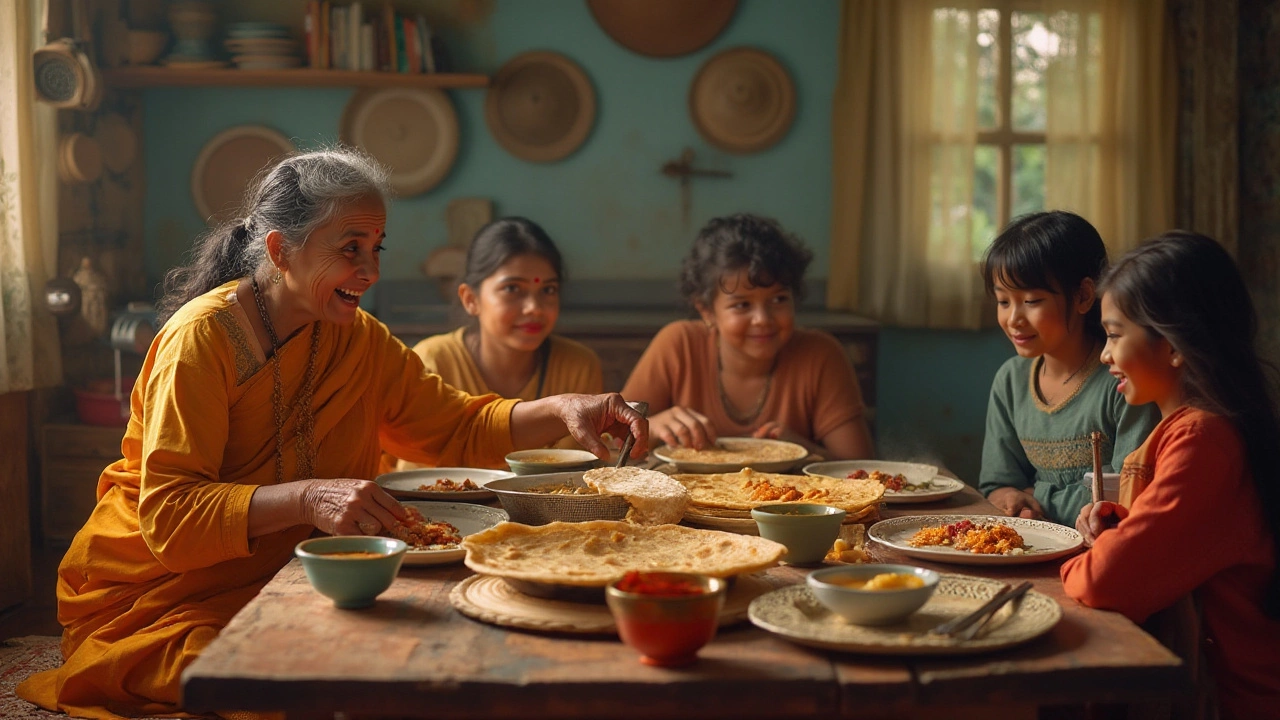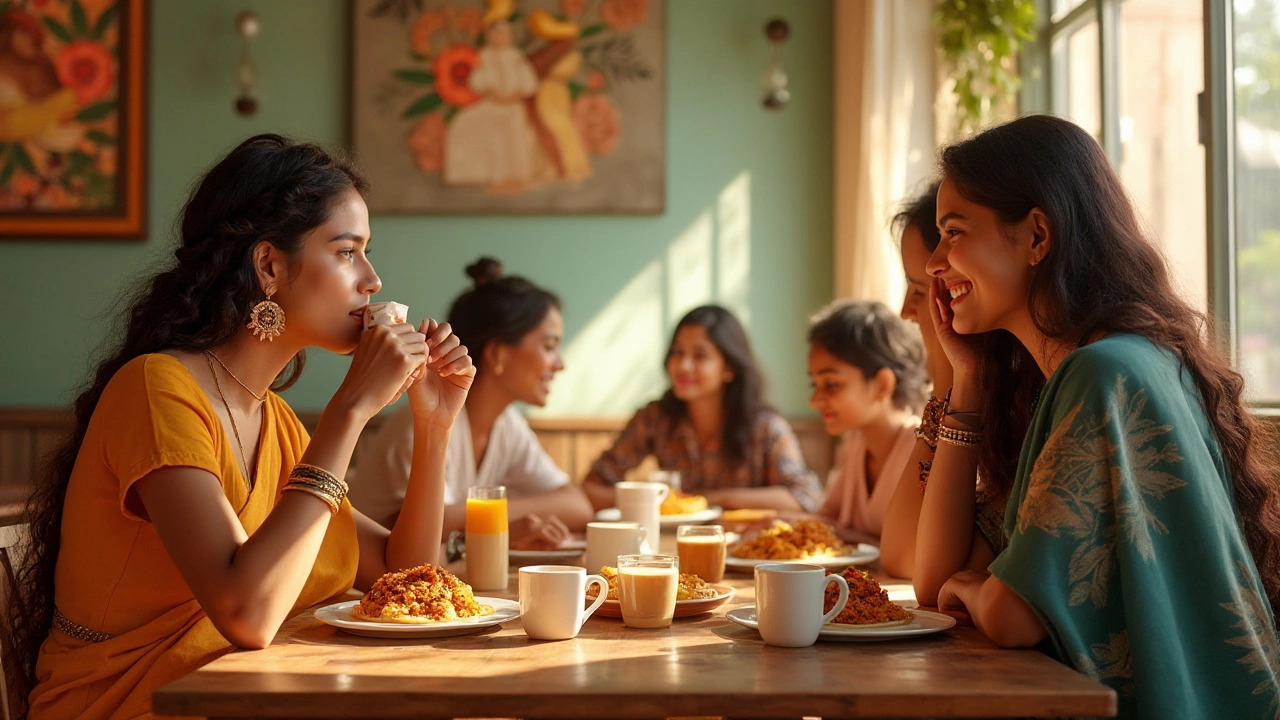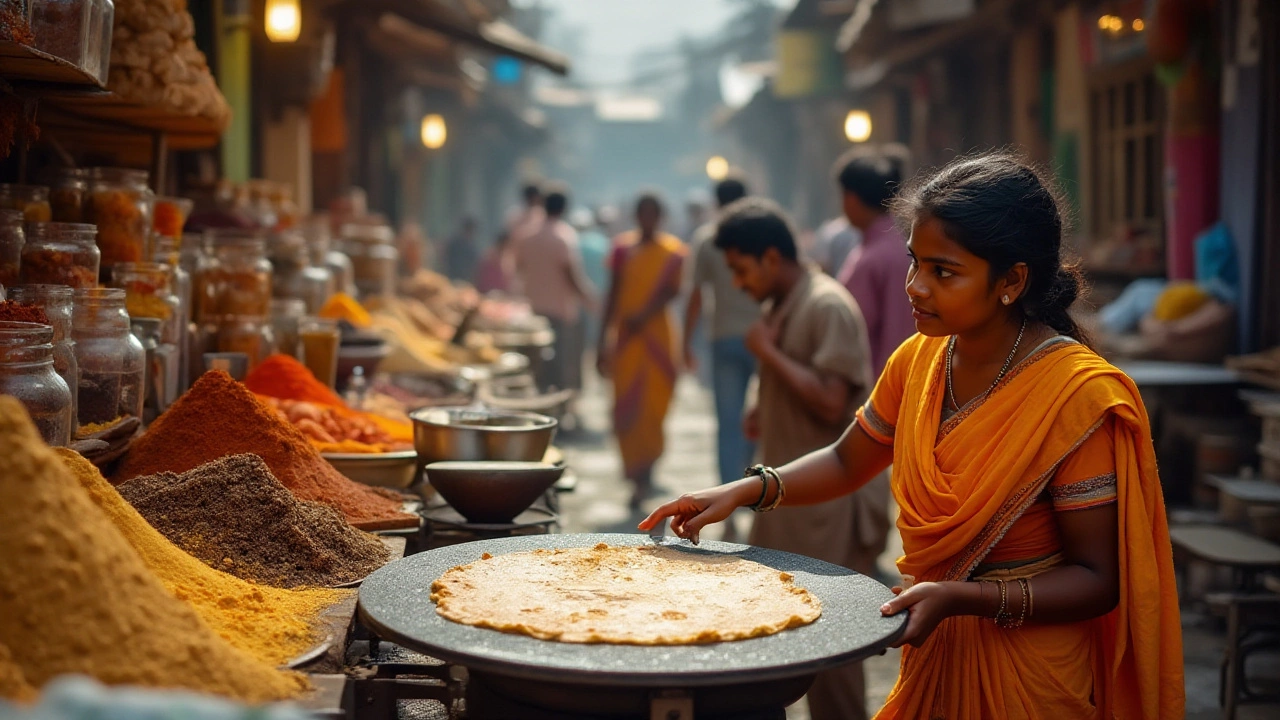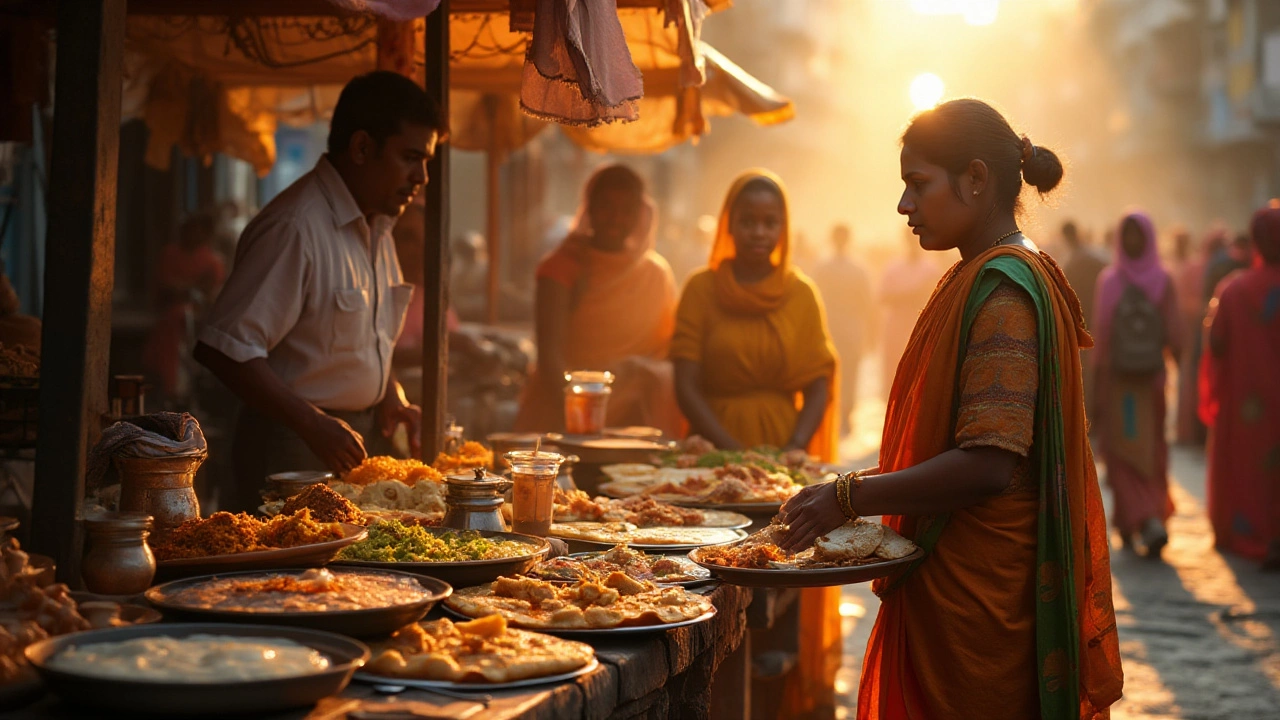India, with its diverse food traditions, promises a delightful breakfast experience. However, navigating what to bring or avoid can be tricky, especially for first-time visitors. A wealth of native spices and flavors often awaits, and bringing certain items might disrupt your culinary adventure.
You'll find it rewarding to indulge in local breakfast staples like idlis, parathas, or dosas, but what could diminish this experience? Choosing familiar over authentic items might be a common mistake for travelers. Embracing local ingredients can be key to savouring your meals.
Dining customs in India also come with their own set of practices and misunderstandings. Understanding cultural nuances could save you from faux pas, enhancing not just your meal but your entire travel journey. So, allow this guide to walk you through what to pack aside and, in turn, better savor the genuine Indian breakfast experience.
- Common Breakfast Mistakes
- Understanding Local Ingredients
- Cultural Etiquette in Dining
- Tips for Enjoying a Genuine Indian Breakfast
Common Breakfast Mistakes
Embarking on a journey through India’s culinary landscape is thrilling, but several common pitfalls can trip up even the seasoned traveler. Breakfast in India is not just the first meal of the day; it's an experience woven with tradition and flavor. Among the most frequent mistakes is the urge to stick to familiar Western breakfast items. Visitors might instinctively gravitate towards cereals or toasts, overlooking the diverse array of local options. This inclination might stem from a comfort zone but restrains the chance to savor authentic Indian breakfast dishes that are both delicious and quintessentially Indian.
Another misstep is misunderstanding the use of spices. Indian food, particularly breakfast, is renowned for its robust flavors. However, assuming every dish is spicy can mislead travelers. For example, a classic dosa or idli served with coconut chutney offers a gentle taste that's far from the fiery spices one might expect. It's this very variety that forms the cornerstone of Indian cuisine, ensuring there's something for every palate. Travelers should be ready to delight in a tapestry of tastes, textures, and aromas rather than defaulting to heavy assumptions about spice levels.
"People who love to eat are always the best people," a quote by Julia Child captures the essence of what embracing new breakfast items in India truly means. It's an opportunity to expand horizons through the universal language of food.
Then there's the issue of hygiene and food safety, which can sometimes scare off foreign guests from trying local street foods. While some caution is prudent, dismissing street vendors entirely can mean missing out on some of the most tantalizing options. Preparations like poha, chole bhature, and parathas from reputable stalls are often safe and provide an authentic taste of the region. Visiting places with a high turnover rate often ensures the freshness of food, and observing the surroundings can give a fair idea of cleanliness standards.
An often overlooked mistake is not understanding regional breakfasts' diversity. India is a mosaic of cultures, and breakfast offerings differ from one state to another. A common fallacy is to presume that the tastes of the north replicate those in the south. For example, while northern regions might favor parathas, Aloo puri or poori bhaji, the southern areas delight in dosas and vadas. Recognizing and appreciating these differences can dramatically enrich one's culinary exploration of the country.
Lastly, portion size misjudgment is a rookie error many travelers make. The portions served can be larger or smaller than anticipated, affecting meal satisfaction. Some breakfast favorites like puri sabji may have deceptively small servings that can be extremely filling. It's wise to sample a variety of items in moderation, rather than overindulging in one choice. This approach offers a comprehensive sense of local fare without overwhelming the stomach early in the day.

Understanding Local Ingredients
In the vibrant landscape of Indian food, understanding local ingredients is essential to fully appreciate the essence of an Indian breakfast. Each region boasts its own unique set of staples, and immersing oneself in these options can transform a morning meal into a memorable experience. One crucial aspect is recognizing the spices and herbs that are the heart of Indian cuisine. Turmeric, cumin, cardamom, and coriander are not merely spices but are powerful aromatic agents that can redefine a dish's character entirely. The balance of these spices, often referred to as 'masala,' is region-specific and can vary even more at the household level. Such eclectic ingredient choices invite travelers to step out of their comfort zones and engage with the myriad of flavors that await.
Familiarity with local grains is also essential. Staples such as rice and wheat underlie many breakfast foods, but lesser-known grains like millet and ragi are worth exploring. Millet, for example, has been a part of the Indian diet for centuries, known for its nutritional benefits. Its versatility allows it to be used in everything from porridges to flatbreads. Ragi, on the other hand, is esteemed for its high calcium content and is often ground into flour to make roti or pasta-like dishes. Exploring these grains not only enriches the breakfast table but also offers health benefits that are a significant part of the holistic Indian approach to food.
"India is its ingredients. Understanding the small flavors that converge into the big picture is key to understanding its cuisine," remarks food historian K.T. Achaya, highlighting the nation's diverse culinary tapestry.
Legumes and pulses, such as lentils and chickpeas, also play a significant role in breakfast dishes. Moong dal and chana are frequently used to create potent protein-packed meals. Lentils are transformed into comforting stews like sambar, which accompanies breakfast items such as idli and dosa across southern India. Such dishes are not only fulfilling but also embody the hearty nature of Indian breakfasts. The ability to view these ingredients not just as food but as a narrative of nutrition and culture is essential for anyone wanting to gain a deeper understanding of Indian breakfasts.
The role of dairy cannot be understated either, with ghee, curd, and paneer being indispensable parts of many dishes. Ghee, a type of clarified butter, adds richness and depth to food, making it a staple in various parts of India. Paneer, a form of local cheese, is incorporated into breakfast in multiple ways, providing a textured contrast to spice-laden dishes. Curd not only soothes and balances spicy elements but also aids digestion. Embracing these dairy elements can unlock a fuller understanding of not just the tastes but also the functional attributes of Indian food culture.
Engaging with India’s rich palette of ingredients requires openness and curiosity, qualities rewarded by the depth of culinary experience they unlock. Whether you're savoring a spicy aloo paratha or a tangy masala dosa, recognizing and appreciating the complexity of their components can genuinely enhance your journey through Indian breakfast offerings. This self-guided exploration is a gateway to enjoying the steadfast practices and avant-garde techniques that seamlessly coexist within India’s diverse food traditions.

Cultural Etiquette in Dining
Experiencing a rich cultural tapestry is one of the rewards of traveling, and dining etiquette plays an integral part in this journey, especially in India. This vibrant land, renowned for its diverse culinary offerings and elaborate traditions, presents unique customs at the dinner table. Navigating these can be both a delightful and enlightening affair if approached with an open mind. Firstly, when invited to an Indian meal, it is customary to wash your hands before eating, which reflects the practice of using the hands as opposed to cutlery. Engaging with your food directly is not only a traditional method but one that many find satisfying in its connection to nourishment.
In India, meals are often served buffet-style, with a variety of dishes spread out for guests to choose from, which complements the communal spirit of dining. It’s considered polite to allow elders to serve themselves first as a mark of respect. Sharing food is an aspect of the culture that brilliantly showcases familial bonds and communal harmony. Remember not to waste food, as it is highly valued, and taking more than you can consume is frowned upon, making moderation and mindfulness key components of a meal.
A gentle reminder is to eat with your right hand, as the left is perceived traditionally as unclean. When dining in someone’s home, paying compliments to the host for their hospitality and culinary skills is not just polite but expected. They take pride in their food, and showing appreciation often leads to enriching conversations about the ingredients and history behind each dish. Locals are immensely proud of their culinary heritage, and they enjoy sharing stories of how recipes passed down through generations carry memories and significance unique to their cultural identity.
Drinking can sometimes be part of your dining experience, and while soft drinks or water may frequently accompany your meal, alcohol consumption depends on the region and family you are with. Certain areas and occasions strictly prohibit alcohol, and it’s wise to follow the cues of your host. Also, it's customary to only pour drinks for others and to refill someone’s glass once it’s empty as a sign of respect and attentiveness. It is these small acts of consideration and understanding of local protocol that enhance the experience of being part of another culture's traditions.
"Eating is not merely a material pleasure. Eating well gives a spectacular joy to life and contributes immensely to goodwill and happy companionship." – Elsa Schiaparelli
When the meal concludes, it is courteous to express your gratitude, often with gestures of thanks. In many Indian homes, guests are cherished, upheld in the adage 'Atithi Devo Bhava', meaning 'The Guest is God.' Such hospitality underpins the substance of the meal experience, turning every dining invitation into a treasured event that goes beyond mere sustenance into the realms of creating bonds and understanding. Through mindful participation, these etiquette guidelines enhance not just your meals, but also your appreciation of the cultural richness that accompanies them.

Tips for Enjoying a Genuine Indian Breakfast
Diving into an authentic Indian breakfast is a culinary adventure unlike any other. One of the most significant aspects of enjoying it is to immerse yourself completely in the diversity of flavors and dishes that different regions offer. From the savory taste of parathas in the north to the spiced-up dosas in the south, each bite tells a story of cultural richness. Start your morning by exploring the local breakfast scene—visit bustling street markets or quaint local eateries. Such places not only offer delectable food but are also windows into the vibrant life of local communities. If you’re unsure where to begin, ask the locals! People are usually happy to share their favorite spots and even suggest what to order.
Understanding the ingredients that make up these breakfast dishes can greatly enhance your appreciation. India's culinary style is a spectacular mix of spices like turmeric, cumin, and coriander, which are not just flavor enhancers but also have numerous health benefits. Taking time to learn what goes into making a delicious Indian breakfast can be a delightful experience. Attend a local cooking class or a food tour that showcases how these ingredients are used. These culinary experiences are often accompanied by fascinating stories about the origins of the dish, enriching your travel journey with knowledge and flavors.
"Food is not just fuel for the body; it is a portal to other cultures." — Renowned Food Anthropologist
While savoring an Indian breakfast, observe the etiquette that accompanies these meals. Traditional Indian breakfasts are often served with hands, which can be a novel experience for many. This practice is rooted in the belief that eating with hands heightens the sensory enjoyment of the meal. Yet, always ensure you know the local customs. For example, the right hand is predominantly used for eating, while the left hand is associated with personal hygiene practices. Being mindful of these cultural nuances enriches your understanding and respect for the traditions you experience.
Lastly, remember to pace yourself through this journey of flavors. An Indian breakfast is not merely about eating; it’s about relishing every moment in the vibrancy that surrounds you. Engage with locals, share stories, and weave those into your travel experience. Breakfast is a cherished time of the day, offering an opportunity to start with a mindful and grateful attitude. In India, it’s a chance to connect deeply with people and culture through something as exhilarating as food.
